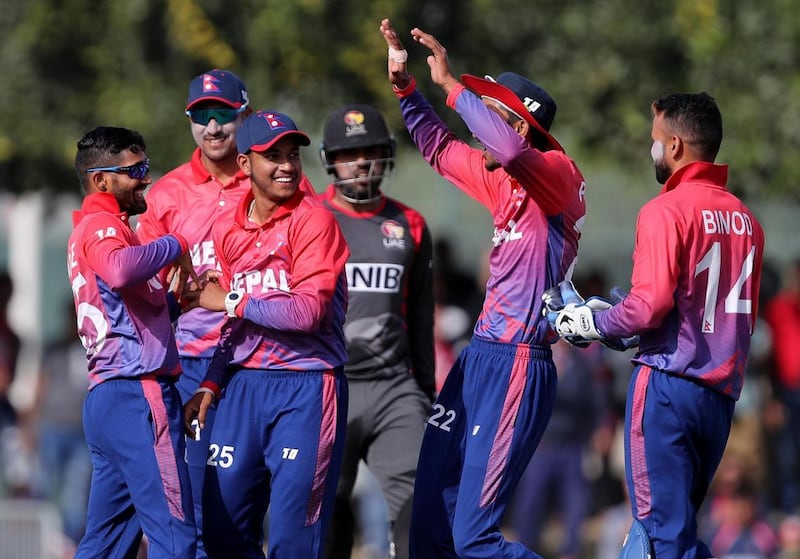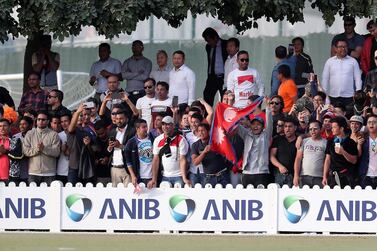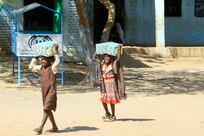Have we just seen the birth of the next Big Thing in cricket? When Nepal reach international cricket’s top table, and then start to sweep all before them, are we going to be able to look back and say we were there when it all started?
Perhaps not. For this was nothing like the starting point of Nepal’s story. Nor is it really accurate to claim we were part of an exclusive group who saw it. Not when there was a crowd so huge that people were locked out of the ground for safety reasons, while the online stream repeatedly crashed because of the weight of numbers of people back in Kathmandu and beyond who wanted to see the games.
But the pair of series wins against UAE in Dubai, in both one-day and Twenty20 international formats, sealed in thrilling style by bravura individual performances that added up to an unstoppable common effort, in front of a vivid, adoring audience, felt momentous.
It felt defining, like the start of the ascent. Without wishing to torture a Nepal cliche too badly, it felt like base camp, before the start of the climb to the summit.
Cricket craze in Nepal.
— Prasanna Madridista Dahal (@imprasanna13) January 31, 2019
A fan watching UAE VS Nep in running bike. @momocricket @ICC @PaulRadley @PeterDellaPenna @CricketBadge @KevinOBrien113 pic.twitter.com/wt9n53xLBc
Certainties in this world:
— Daniel Beswick (@DGBeswick1) January 25, 2019
Death
Taxes
Nepal cricket fans crashing a stream because there are millions trying to watch their team.#UAEvNep
Maybe because we have been here before, and seen it happen. There is a template, here. At the end of 2014, a UAE side bound for the World Cup in Australia and New Zealand played Afghanistan in a four-match, ODI series in Dubai.
The story of Afghanistan’s refugees-turned-cricketers was already well chronicled by then. From the nether reaches of international cricket, they had risen through the ranks, played at a World T20, and were already the subject of books and films.
The UAE comprehensively outplayed them in that series, winning 3-1, despite feeling like the away side on their home patch. All the while, Afghanistan had hundreds of supporters following them.
The same ground authorities at the ICC Academy back then had to move metal security barriers to make extra room for supporters – just as they did with Nepal fans on Friday.
Back in 2014, the small mound at the northern end of the oval became known as Kabul Corner. This time around, it was informally renamed Kathmandu Corner, and, by Sunday’s finale, it felt just like an enclave of Nepal’s capital.
Supporters came in droves, despite the rain that meant there was no guarantee of play – and despite the brusque, you-can’t-stand-there security guards.
Delight (and a hastily aborted pitch invasion) as Nepal square the series in Dubai #UAEvNEP pic.twitter.com/jGO6aQD1TF
— Paul Radley (@PaulRadley) February 1, 2019
Back in 2014, the Afghan supporters were distinct for wearing pale salwar kameez outfits, and carrying tricolour flags. Many Nepali fans, too, carried the double-pennon flag of Nepal this time.
A number wore unofficial replica shirts of the national cricket team, and Dhaka topi hats. There was even a small concessions stall, beside the cross-fit multi-gym, selling chicken momos and vegetable noodles at Dh15 a throw.
There are so many parallels between the Afghan series of 2014 and this one involving Nepal, but two notable differences. No Afghan fans had to miss out, as some Nepal ones did on Friday, given the high demand. And Nepal actually won their series.
“I hope we can match them,” Paras Khadka, the beloved captain of the side, said of the example set by their Asian counterparts Afghanistan, after completing the T20 series win.
“They have been fabulous, the kind of cricket they have played over the years. They have won everywhere they have gone.
“For us, we are a young team. Our realistic goal would be to become a Test-playing country, but it is going to take a while. Maybe five, eight, 10, 12 years – but this is a start.”
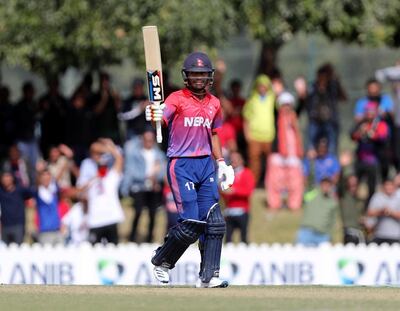
“Young” is understating it. At time this felt like kindergarten cricket. Across the two series, Nepal’s match-winners were: 16-year-old Rohit Paudel, 17-year-old Sundeep Jora, 18-year-old Sandeep Lamichhane and 19-year-old Dipendra Airee.
Managed properly, those players could be the core of the side for a decade or more. The possibilities for this team seem limitless, with or without – as is currently the case – a functioning administrative board supporting them.
“Just winning this one series won’t change a lot, but it has given us a lot of confidence that we can do it,” Khadka, who has led the side since 2009, said.
“I hope we can keep pushing ourselves. The most important thing is we have performed as a team. Every individual has stood up in different scenarios.
“As a captain, I can’t ask for more, and I hope we can take this momentum into future matches, and every time we go out to play, play the same brand of cricket. If we play how we have played in the last couple of weeks, the only way is upwards.”
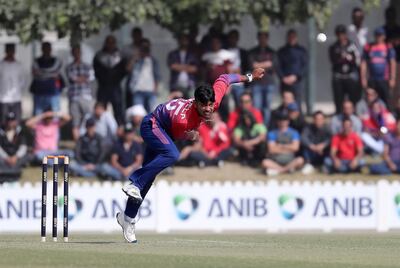
International cricket remains largely a closed shop at the top level, with only 10 teams admitted to this year’s World Cup and 12 entitled to play Test matches, meaning opportunities will remain limited for Nepal’s team.
Players, though, have other avenues to success. Even though Afghanistan’s ascent was well-publicised, it took till 2017 for Rashid Khan and Mohammed Nabi to blaze a trail for their compatriots – as well as others beyond the Test elite – in the Indian Premier League.
That was seven years after Afghanistan had debuted at a World T20. In 2012, Kabir Khan, their then coach, suggested it was time Afghan players were given a chance.
“Somebody has to be the first,” Kabir said back then. “Somebody has to be the first to have a contract with a county, or in grade cricket or in the IPL, the Bangladesh league or the Sri Lankan league.
“If the door is open, you can go through it. At the moment the door is shut, and we want someone to start to open it.”
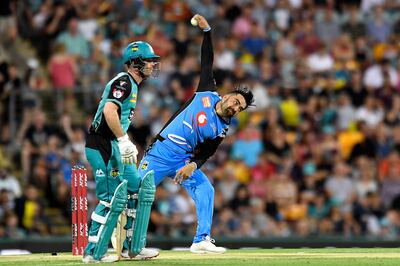
Rashid, more than anyone else, broke the door down. Nabi, Mujeeb ur Rahman and Zahir Khan have profited so far, while the dream is now a viable one for everyone else.
Coincidentally, Nepal’s own trailblazer is also a teen-prodigy leg-spinner, in the form of Lamichhane.
Despite being a mere 18, he has already played at each of the major franchise leagues around the world. Having played a key role in the series wins over UAE – without necessarily hogging the limelight – he will be back in action in Dubai again later this month, when he adds the shirt of Lahore Qalandars, the Pakistan Super League franchise, to his kitbag.
“I think it is good news for Nepal cricket,” Lamichhane said of his own personal globetrotting. “Nepal, too, is getting exposure from me playing in all these different leagues.
“And the new generations, as well as the players who are still playing for Nepal, will believe there is something there for them, and that they can play as well.”
______________
Latest episode of our weekly podcast
______________
The fact the final T20 international was reduced because of Sunday's thunderstorm to a 10-over match seemed fitting, given it was being played in the country where the first T10 League is in operation.
Lamichhane is the only Nepal player to have featured in that competition so far. Had any of the franchise owners from the T10 League looked in on the series in Dubai, they might have discovered some more new recruits, each of whom might well bring with them a legion of supporters, too.
“I hope the franchise owners are looking into it,” Khadka said. “More than that, we are here to play the best brand of cricket that we can. You can’t control much else, or what others think of you.
“As a team, we are trying to push ourselves. Obviously, there is a lot of talent in the camp. It is a matter of getting that opportunity, and after Sandeep, what he has done all around the world in T20 cricket, I hope the other players can get that opportunity and Nepal cricket gets the chance for exposure.”
